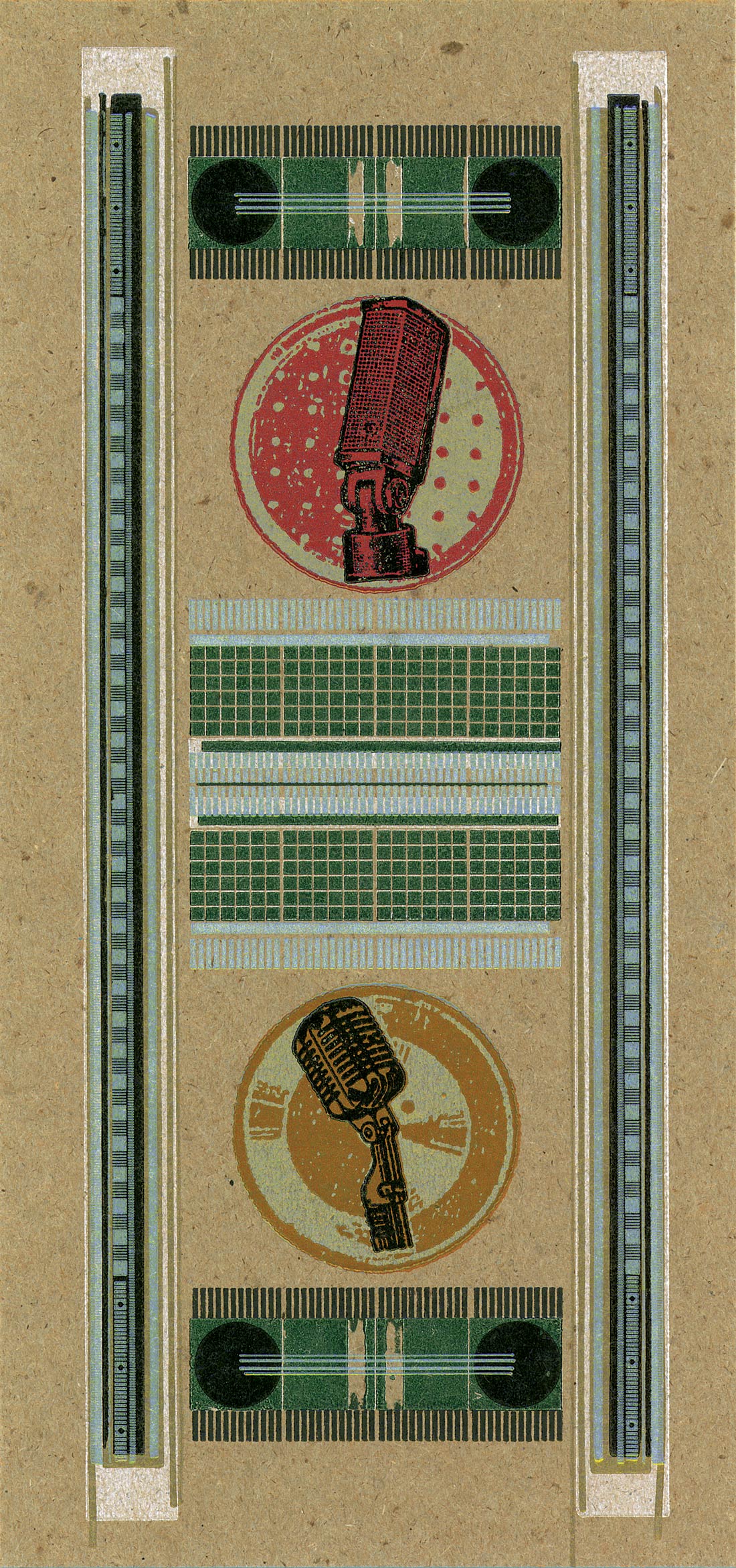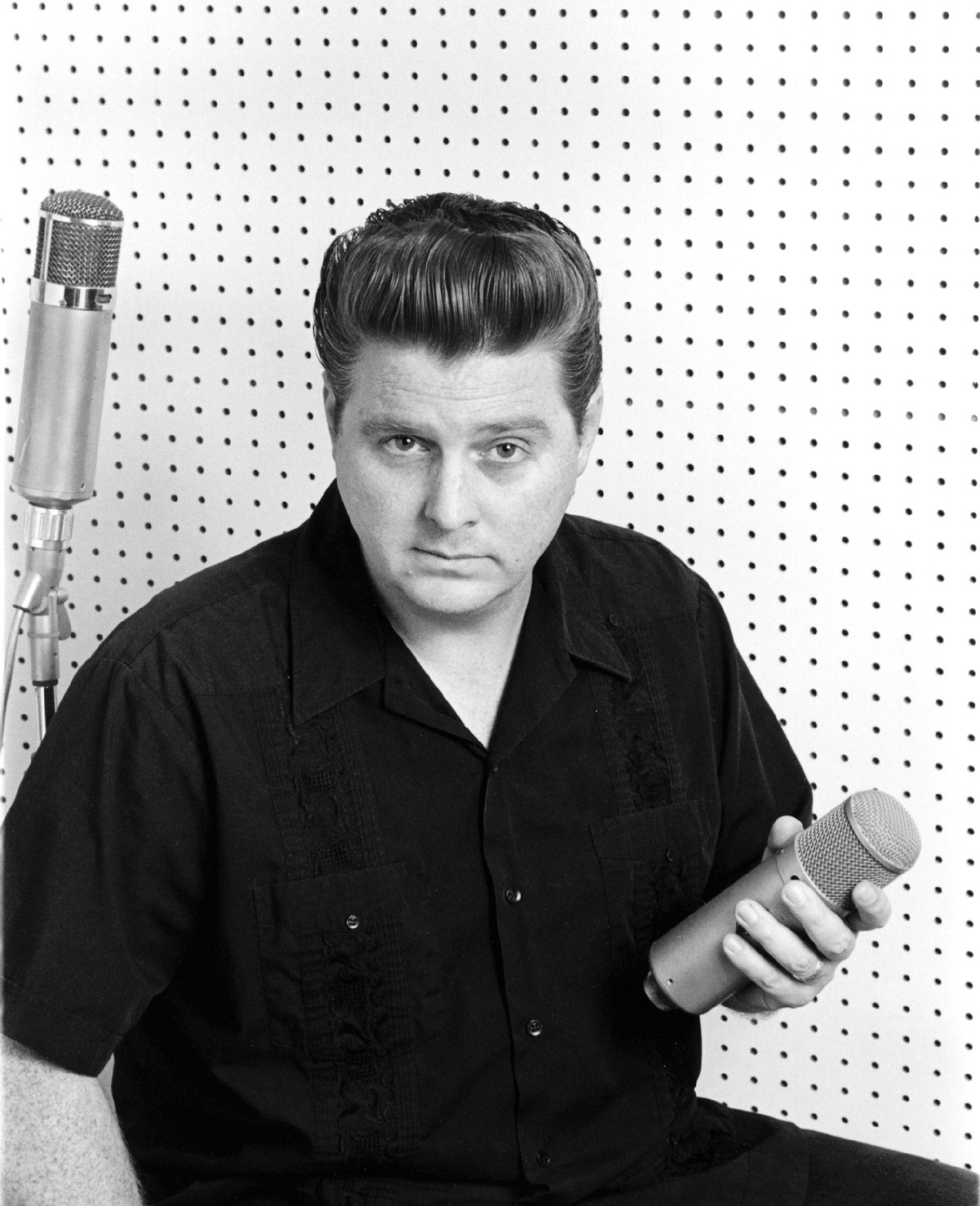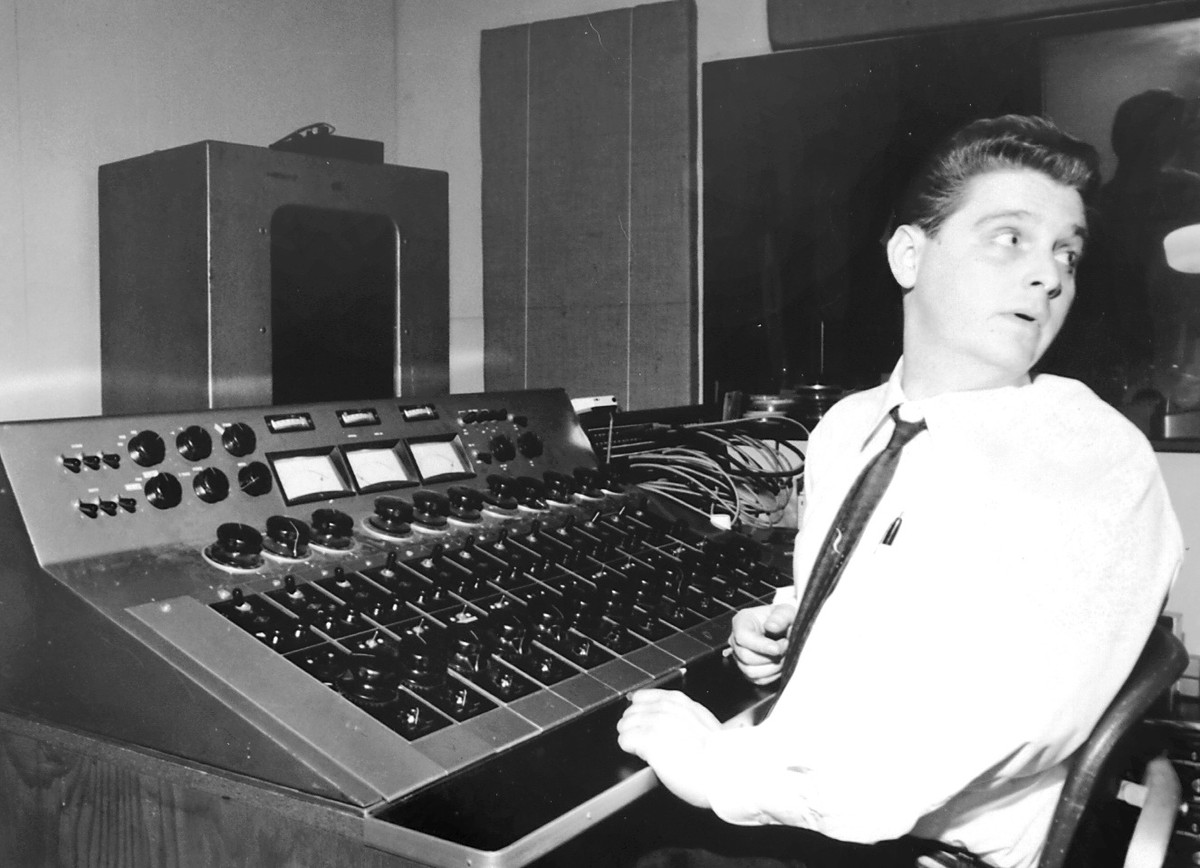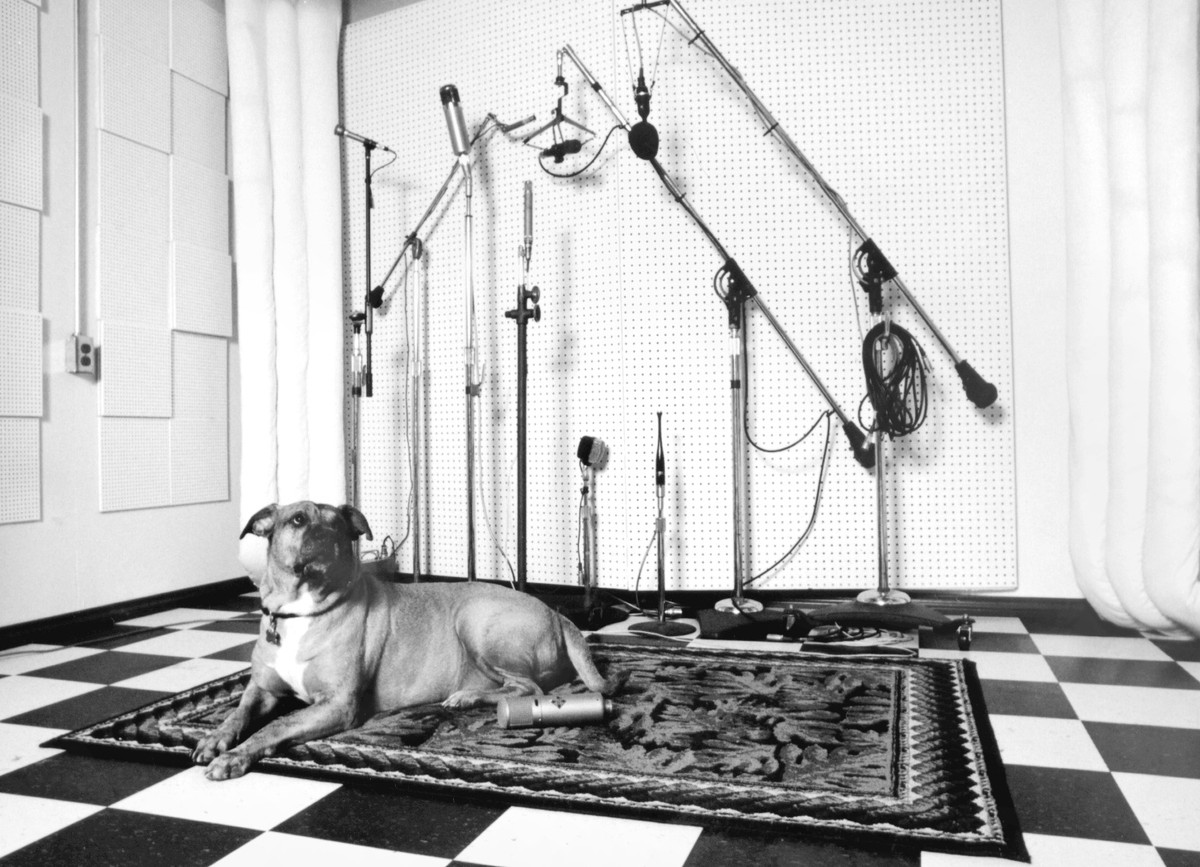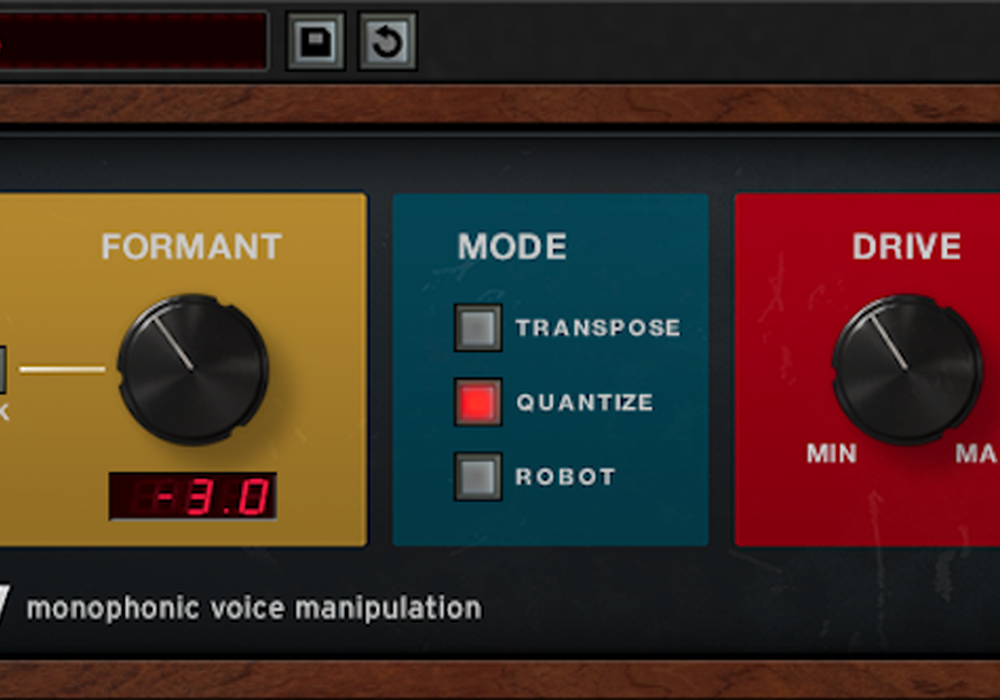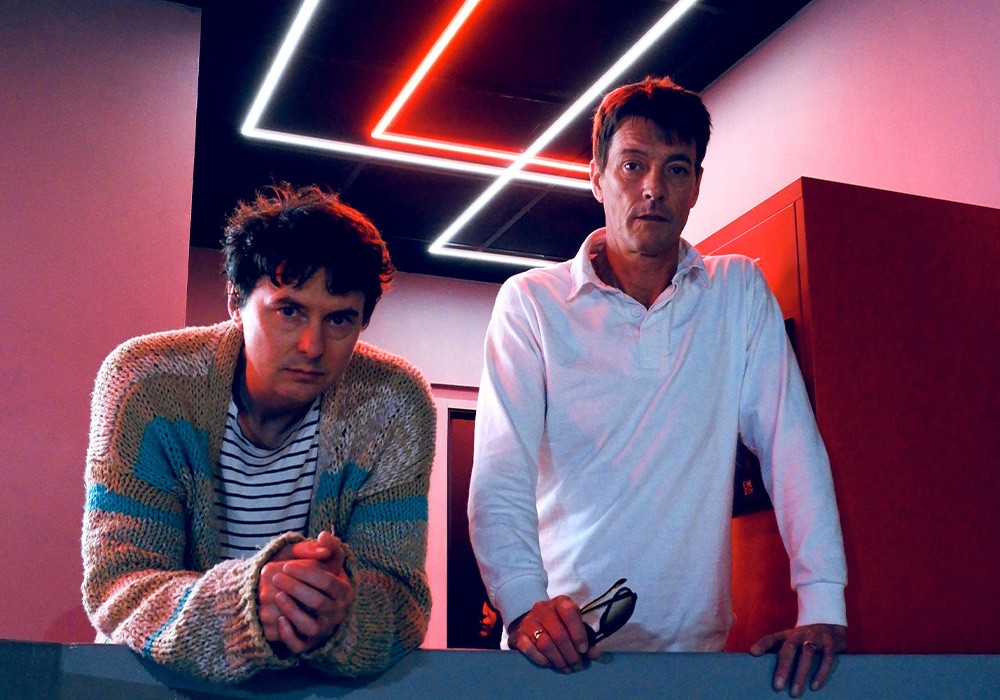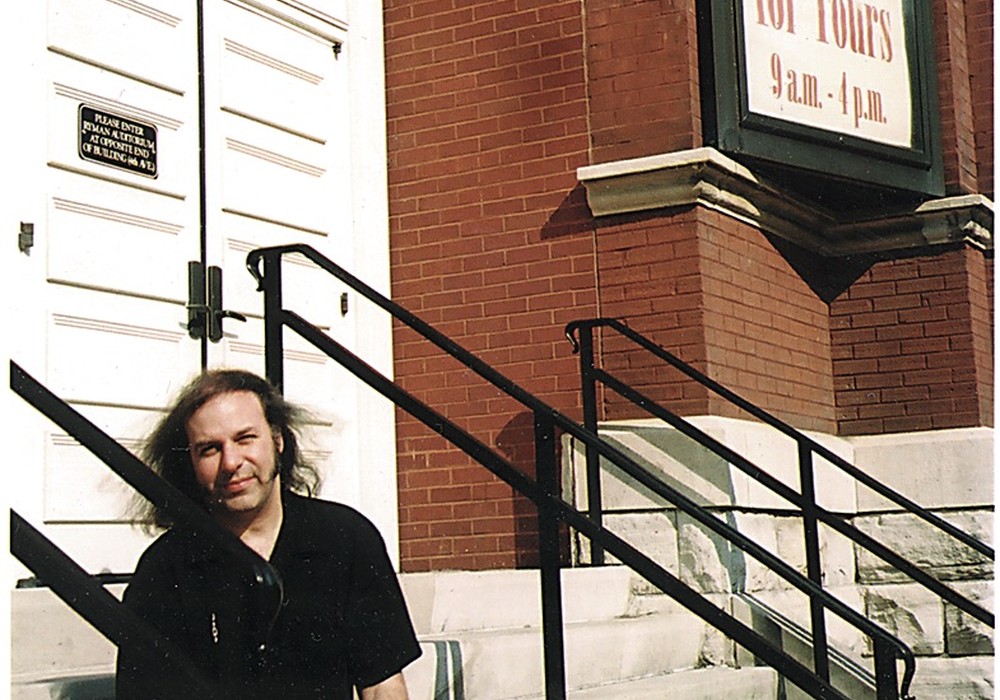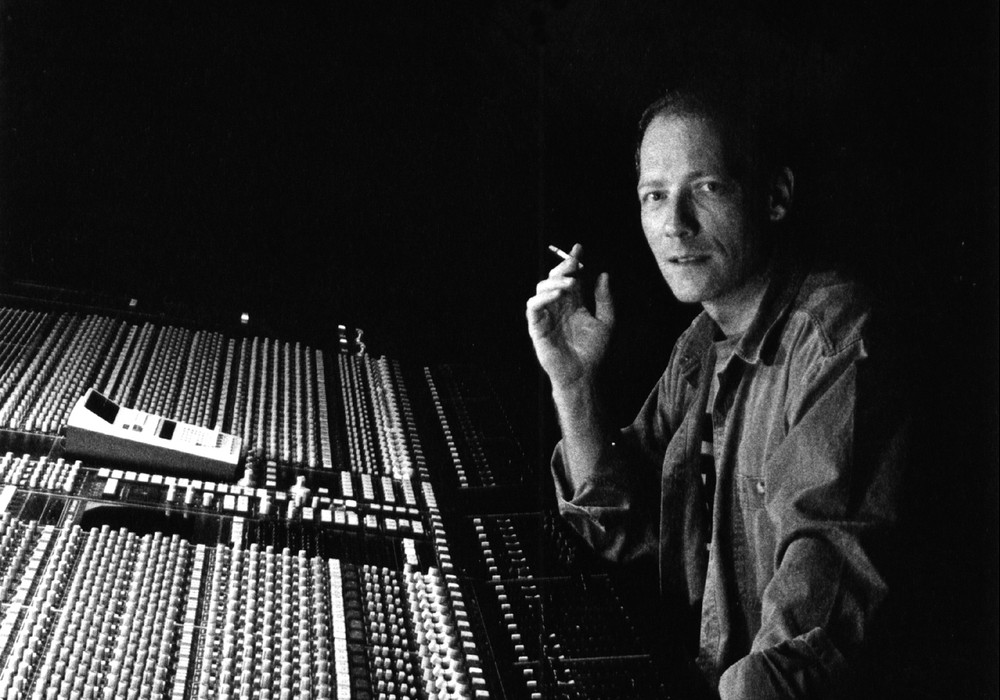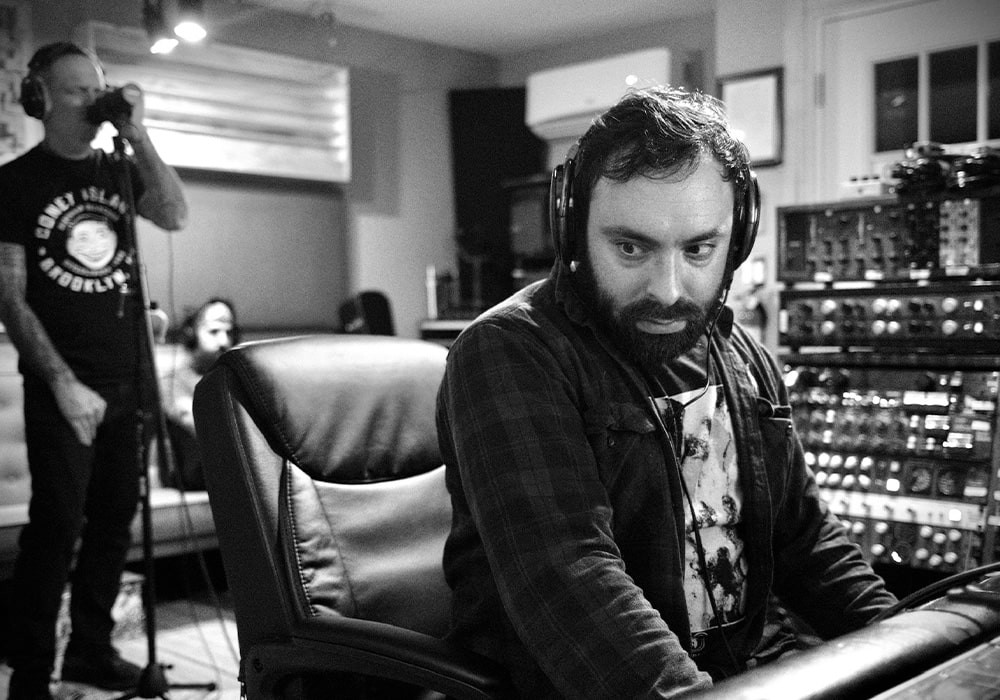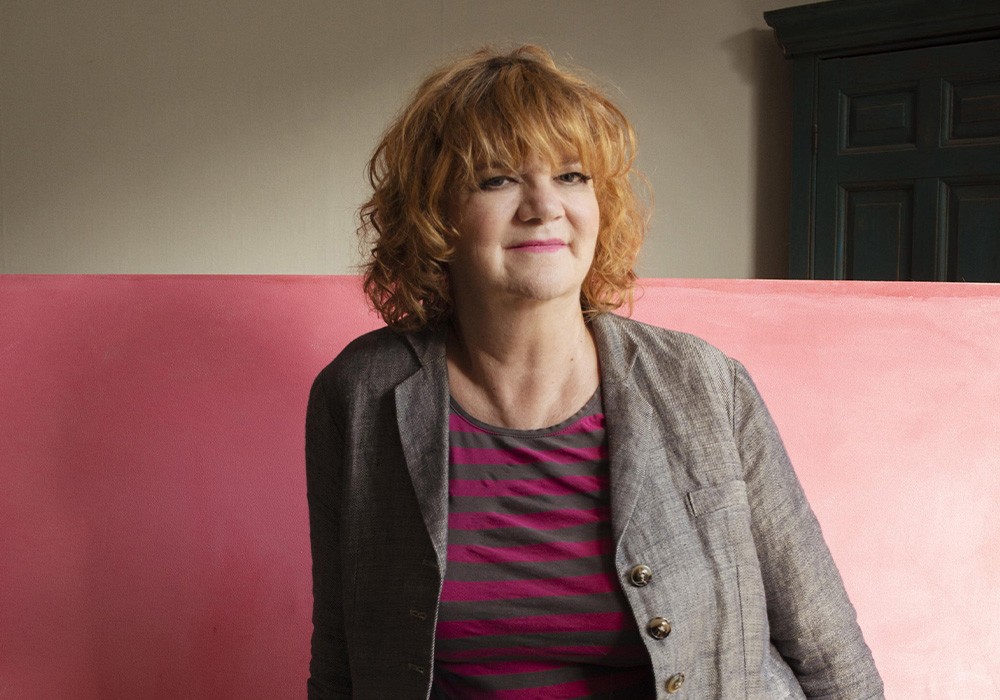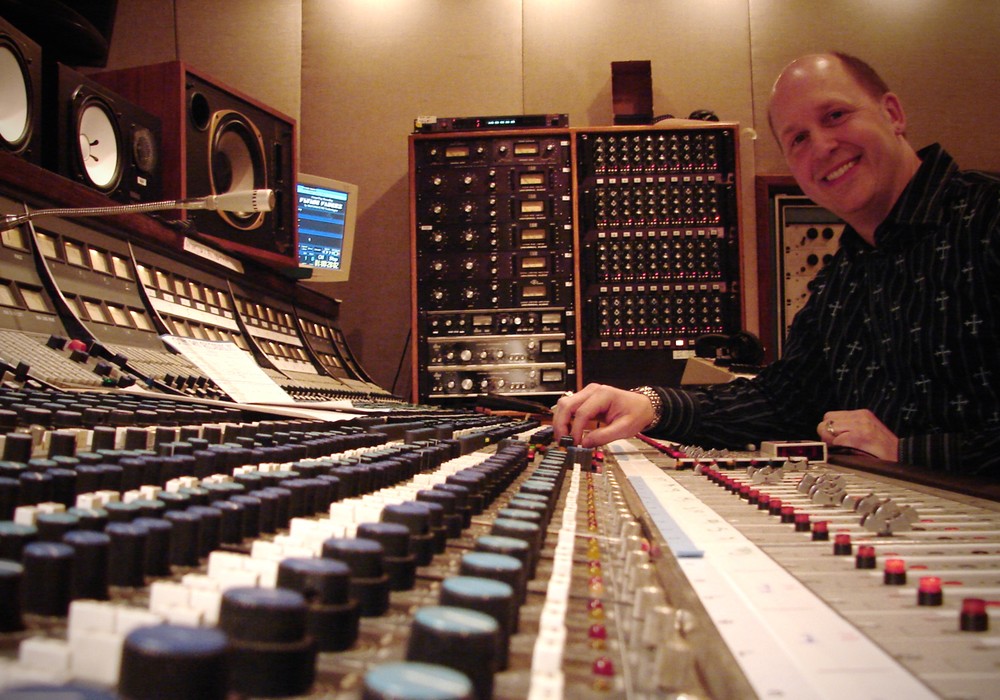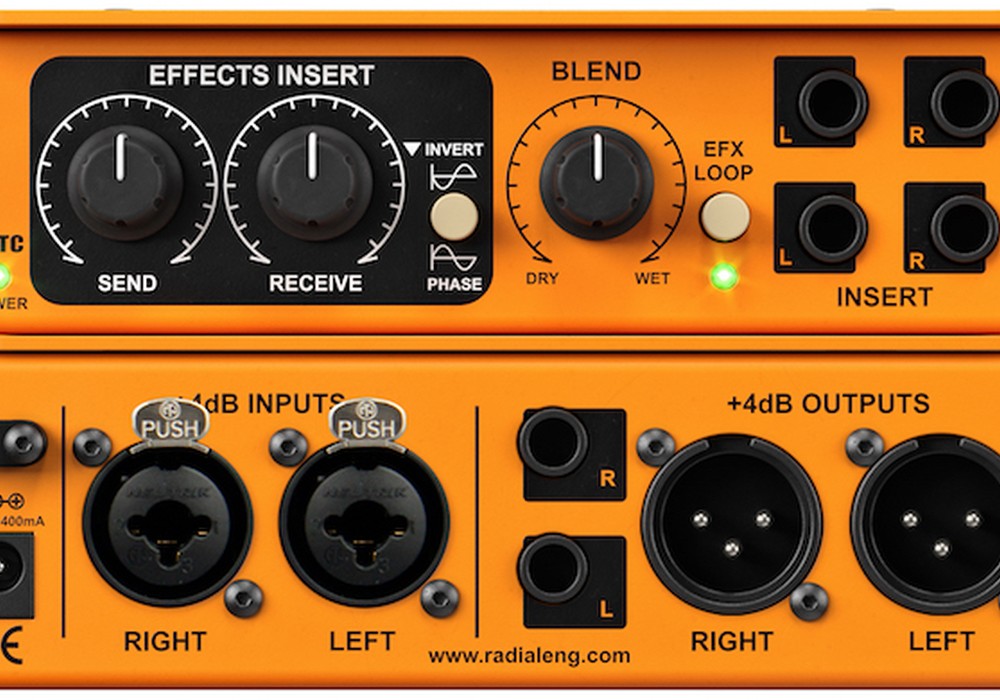Mark Neill talks a long time. A simple question on Blumlein pairs can unleash a conversational flood of anecdotes, electronic puzzles and acoustic theories lasting an hour or more. Just when you start to digest, he'll launch again, "None of that stuff is punchy, none of it. Those guys don't care a damn about phase!" he'll say about a recent popular release. And, invariably, he's right. Whether it's a rhapsodic dialogue on the virtues of Blood on the Tracks ("So many RE-20s!") or condemning the speciousness of the vintage gear trade ("The Beatles don't live inside that machine!") Mark applies his keen ear and Georgia horse-sense to every problem that confronts us in the world of recorded music. In between cultivating the diverse approach that has graced records by Ricky Nelson, The Paladins, Los Straightjackets, Billy Zoom, Deke Dickerson, Carl "Sonny" Leyland and Eddie Vedder, along with running his Soil of the South studio, Mark found time to talk to us about his analog obsessions and the dense and daunting prospect of just sounding good.
So many good records were made on 2-track, 4-track, 3-track, and 8- track, with a lot of instruments, arrangement, ideas and finesse. But in this day and age, people assume that less tracks means less music on the tape.
8-track, for me is like 48-track or something, because what I've done since the '70s is record either live to 2-track or live to mono, or live to 1/2" 3-track. I just saw no need for more because my whole idea was to assemble the musicians that I needed, which was hard to do, and get them to play at least in groups of two [as] live performances. If they did the backing track on the 3-track — let's say that would be on the outside tracks in stereo. Then there'd be a middle track. If I had to overdub the vocals there, I could also have somebody out playing the extra piano part, the tambourine or the lead guitar overdub then. Those things would happen as groups of people twice. So, even when I overdubbed I was getting these great numbers of people even in the 3-track process. The energy level at least was there on the live stuff and it was still pretty interesting to hear it as twin live performances. Sgt. Pepper was made the exact same way. They didn't just put down a guitar overdub, there's percussion on some of those tracks, there's all kinds of things found on the 4-track tapes they made that record with. It's the same with Beach Boys masters — it's the same with everybody's masters who ever had to use a three or four track machine. I didn't go 4-track 'till after 1988. I thought it was stupid, and it seemed like, "Well if you're going to reduce the track width to that you might as well have 8 of the stupid things!" 8-track was pretty much the beginning of me not using all vacuum tube equipment. Of course, I'm not completely transistor but that's what everybody thinks about me — they think I really sold out! [laughs]
What do you do, for instance, mic'ing up a drum kit?
Well, for jazz, things like that, you know — real listener's kind of music, obviously it goes across two tracks. However many mics are on the drums goes across two tracks and that's it.
So you just sub-mix the stereo...
Oh yeah, you sub-mix to stereo. In fact that's where the stereo bus in my console comes in handy for tracking. Then the other instruments get submixed on another portion of the console to maybe another portion of the tracks. And that would be the maximum, there'd be a maximum of four tracks done live ever.
Do you do any bouncing?
I don't. I used to bounce with the 4-track for my own demos. Bouncing is just a miserable experience on an American tape machine, whether it be a 3M or an Ampex, which is the 4-track I had. It's fun in that sort of PortaStudio sounding way, but not for a release record.
So you gotta get the people around the mics.
Yeah, and that's another thing I'm into. I think the thing that I'm known for is the U47 and the M21 Altec. Usually those two microphones. But I try to get as many people involved in pretty much those two microphones as I can, whenever I can. I find that if I have to break out dynamic mics and close mic things, I always feel like something is going really wrong. If I have to flick on the EQ and start turning a knob, I really feel like I'm doing somebody an injustice or something — which was great in the old days, because with the old tube board, there was really not much in the way of EQ to even fool with, so it was really easy. You could just say, "Oops sorry I don't have that EQ." Of course, now I do and I feel guilty if I'm adding anything at 1500 cycles!
What about mics? What's worth it for you and what's a hype? I'd say a Coles 4038 is worth it.
I'll agree with that. It's a thousand dollars well spent. There's a lot of slightly less costly alternatives that are jive. The Royer-Speiden is a great ribbon too.
Speaking of ribbons, the Beyer M160?
That's a good mic. At under $500, a steal. The Neumann microphones that are tube, in good condition, are your best buy. It's a very strange idea that you would really skimp on the microphone end. My experience is that with a good microphone, I've gotten really consistent results since the '70s on almost any recording format. I've recorded on all formats: digital, analog — both tube and transistor, it doesn't matter. If I listen to something I did in 1980, with a U47, and I listen to something I did yesterday with the same basic Telefunken, Neumann U47, it stands up.
You're somewhat renowned for being able to emulate the sounds of certain older studios.
Right.
Especially popular with rockabilly guys. Do you care what gear you're using, or is it more a "knowing what you want" issue?
It's a more a "knowing what you want" issue. It's funny, because I remember being really hardcore in the early '80s about it. There was really not much digital around. I was all vacuum tube then, everything from the microphone through the console, the microphone in the echo chamber, the amp that fed the speaker in the echo chamber. The tape machines were all vacuum tube and I remember saying, "I'll never change — as long as I can get tubes, this is going to continue." But I had very little business in the way of record production, very little. A lot of the records I did were of friends, and for free, because you couldn't get anybody to pay you with that kind of hardcore attitude. Now, of course, it would be really popular to do something like that! At some point you're going digital. You'd better figure out quick how to make things sound like a Buddy Holly record without the crutch of a tape machine that doesn't have much headroom. There was a time when I was using older Ampex machines I could dependably get the sound, the bass sound that was on many old records, and I was really happy about it. Well of course now I know how to do that without the aid of a tape machine that just doesn't have the headroom. And if that's the sound that they want, obviously I can get that into digital very easily. It's not that big of a deal — there's a lot of different ways to get that to happen. That's one of the signature sounds off an earlier record — the kick drum and the bass were not very dependably firm or reliably punchy, you know, the two together. So, you'd have to get one punchy and live with the other. You know, whichever one was the driving force in the song, that's what you'd use. With a low headroom format you had to make choices quick.
These days a lot of artists have their own ideas about what gear sounds like. Didn't Ricky Nelson have some Neumann microphone opinions?
Oh, he was really funny. He had the eras mixed up. I had an early '50s Telefunken U47 and he was pretty convinced that he was using the late '50s Neumann on the sessions that obviously were earlier. I had to call the engineer who did the original sessions and basically ask him, "What mic did he use?" [laughs] It was a pretty sticky situation.
What'd you guys end up using?
We ended up using the original mic that should have been used, but you know, his memory had faded quite considerably. He didn't remember recording 2- track, 3-track, any of that stuff. He remembered 4-track, which must have been the late '60s for him, in Hollywood, 'cause it was pretty crude there. The original engineer was a super good guy named was Bunny Robyne, and he owned Master Recorders. You could call him on the phone and talk to him, he was a very sweet guy and I learned a lot from him and Stan Ross, from Gold Star and Dave Gold. I used to have discs cut in Gold Star, and you could find out things, you could say, "Did you really use the hallway for the handclaps on 'C'mon Everybody'?" or whatever these songs were. And sure enough, you could stand at Gold Star in the hallway and hear those handclaps. [claps] You could clap your hands like that and hear it, like, "That IS it!" Simple things like that you know now are actually kind of valuable to know, because people think in the sort of digital way, you know, what reverb program must they have used. It was a hallway! [laughs]
Well what are some of your favorite studio sounds from the old studios?
Well, Sun is a real great one for me but you know, I get quoted because I do a lot of records that sound just like Sun studios. I have a stigma there — people think that that's my big thing. And it's really not. Actually, Phillips International, which is the second studio up on Madison, is equal in my opinion. It's equal in its own kind of odd way to 706 Union, I really do believe that. And I'm really into Nashville. Little Victor Studio B and Bradley's. In fact, my studio that I've used for my own stuff, the acoustics are pretty much modeled after the Bradley's studio. The top- notch studios would definitely be Bradley's, Studio B RCA, both of Sam Phillip's studios, and most definitely Abbey Road. And not for all the Beatles reasons everybody else picks! [laughs] Because a lot of the pop things that I've listened to — that great pop — was recorded at Abbey Road. And there's a lot of classical stuff recorded there that I like. And of course, 30th Street, Columbia, who could say enough of that. You could write a whole article about the greatness of that place.
The Beatles thing is sort of a corkscrew because there's so much lore now that it's led to misconceptions about how those records were recorded.
Well, Abbey Road's recording techniques, room acoustics, attitudes about signal processing and such were very similar to 30th Street Columbia. I'm pretty convinced when EMI was carrying the American Columbia product that there was a lot of back and forth between those studios. You can see a lot of similarities. And the sound too if you listen to late '50s Abbey Road stuff and late '50s 30th Street, you'll hear some similarities that don't seem to travel anywhere else in the world. I'm into anything that can sound like 30th Street as far as the overall atmosphere of the whole sound. West Coast recording studios are generally not up to par in my book, with the Nashville, 30th Street Columbia and Abbey Road-type studios. It's more of a technique obviously, because a lot of these studios were limited by the same equipment. You know, it's just a way of thinking that these engineers had that was really unique.
Explain this to me like I'm five years old. Let's start with what NAB equalization is.
NAB is a forced standard because Ampex at the time were making machines that were 30 ips only. The 200s. RCA was attempting to make tape machines for the commercial broadcast market and there were several others that were vying for that. They wanted a standard and NAB was imposed for the slower tape speed. This equalization contains two EQs, one for the low and one for the high-end, and the high-end is a milder boost, pre-emphasis, meaning that it was in the record circuit as you laid the sound down on the tape. You were actually emphasizing high-end with an EQ and low end which you would wipe off later in the attempt to get noise reduction then shave it back in playback according to the boost that you'd put on previously. NAB has the flaw of not having that much high-end boost in it and having a really crummy low-end boost in it which was really there to address problems with early tape machines having 60 cycle hum.
Where did Ampex come in?
Ampex basically was dragged into it because if they wanted to make a broadcast market machine 15 ips they had to sell a machine with a standard. Ampex actually was attempting to make their own standard, their own master equalization. It originally looked a lot like CCIR, which is what we're going to talk about. I've seen the drawings and the paperwork on it because I used to have one of the earliest 200s, and it had a lot of proposals for EQ because there was no standard in 1947. They were just sort of mak ing it up as they went along! I thought what they originally came up with for a proposed slow speed standard looked a lot more like it should have looked, which I think was based on the German Magnephone, which is what they were looking at when they made the 200. By the time NAB got a hold of it in the early '50s and decided that they had to come up with a standard, it was a lot like 44.1 — sort of imposed on everybody. It wasn't a thing that everybody said, "Oh hooray, this is such a great sounding tape EQ standard."
That's a good comparison.
Well, it's a comparison that continues to this day — with compression formats, with minidiscs, everything. All the standards are imposed, you know? And America's a really unique place that doesn't really care about high fidelity and never did. There's always been a lot of lip service about how this country is just really the blazing technological pyramids and it's just not. It's all about turning a quick buck, so those standards are pretty much sucked up easily — "Oh, 44.1? That sounds like you could make some money, we'll do that." You know, get that thing out on the market and sell it quick. That's what it's all about.
We should reiterate that we're only talking about 15 ips.
Only 15 ips, because when it comes to 30, almost any tape machine can do it if you have the will and the technical expertise to do it.
Now CCIR, which is what you favor, is in a word, better?
Well it's one EQ. It's one time constant. And it's in the high-end. There's a lot more of it. There is one high- end boost and when you play that tape back, you take it back proportionately and have a lot less of what your ear considers to be high-end noise. We all know that your ear a has a sensitivity range. CCIR kind of effectively addresses your sensitivity to noise. It does a good job, it's not totally silent, but it works a lot better than an NAB does 'cause NAB is a big compromise. The thing about CCIR is there's no low- end boost at all, and that's brilliant because this is where you start running out of headroom fast — when you start adding a whole bunch of low-end to magnetic tape. The early Ampex tube machines, which I ran for nearly 20 years, those machines had such a birth defect it was amazing. They had no headroom in the low-end. Tube Ampex machines have almost — with NAB — no headroom. I mean it's just frightening. I remember talking to Alan Sides about this he said, "You know the magic is to run these on 30 ips if you can figure it out." I'm like, "Oh, you're damn skippy, that's the best way to run 'em because there's no EQ in the low end!"
Do you think the popularity of 30 ips and the vogue that it has enjoyed for a while has something to do not hearing the NAB EQ?
Well, that gets really complicated and there may not be enough pages here to deal with that. I think that CCIR 15 ips has a lot more phase shift, we know that, because of the EQ. There's quite a bit of high frequency pre-emphasis. And there's two camps: a lot of people really like that phase shift — they like what it does, it adds sort of an indefinable "what is analog recording?" It's mostly the phase shift from the pre-emphasis. 30 ips, if the machine is running right, sounds pretty close to no tape at all. A really good running tape machine at 30 almost sounds pretty much like the input and it's really no fun, to be honest with you.
We like 15 for the fun!
We like 15 because there is a cushion there. When you slow it down — you imagine the physics — it's simple for anyone to understand. You've got shorter wavelengths, suddenly, and you literally are compressing sound onto the same given magnetic particles that 30 ips, with its longer wavelength — you don't really need technical explanations for this. I never saw the need for 30 ips tape unless you were recording something that needed the super low noise floor.
Like classical.
Like classical music, and you know, you needed the editing capabilities that are unbelievable at 30. With classical music, you really need some transparent editing on that. But to be honest with you, 15 ips for pop music is really the stuff that we like. I almost always look at that. People always say, "Oh geez, we went 15 and it got a lot thicker, but you know, I really miss this, that and the other about 30." Well you can have both with CCIR 15 ips.
There's a whole group of people that don't even know these two EQs exist.
That's true. It's really funny though, if you buy an MRL test tape for your tape machine, he gives you a little sheet [that] features CCIR! In America we have Ampex and Scully and MCI and stuff like that and those tape machines came because of broadcast standard. The big money's in broadcast, not in high fidelity recording, so these tape machines came 15 hardwired NAB. Only later did they come switchable. The ATRs and modern MCIs and a few other machines would come with a switchable EQ if you knew how to get in there and do it. But once an EQ standard gets going in America, it's like a snowball. I remembered having discussions with engineers about the superstition of changing. Like, "Well, yeah, CCIR sounds a lot better, but who can play it back?" I remember that discussion a lot and I remember thinking that it was just a poor excuse.
Well, unfortunately, given the lack of standards, it can actually be a problem.
It can be, but I also found that I had more problems with NAB tapes because there were two EQs to adjust. They would slack off and not do it right in the mastering labs. In fact, a lot of the mastering facilities in Los Angeles' cutting lathes, when it was vinyl, were out of polarity! Not to mention the fact that they wouldn't really spend much time getting your alignment tones right. So I found that the dual EQ standard of NAB was really ropey and it wasn't dependable or standard in any way.
I think now it's discouraging for a lot of people to use tape because mastering has gotten down to the Playskool level — people who aren't qualified are doing it — and if you have to tell some guy you have CCIR 15 ips tape.
They go, "WHO?"
Well, they could set up the machine so badly it doesn't sound right.
Because a lot of people are playing these CCIR tapes on a NAB machine and then putting it through an outboard equalizer to straighten it out, which is the wrong way to do it, obviously.
When people ask about mixing, and they're thinking of shelling out the extra dollars for a 1/2" machine you always tell them to try 1/4" first.
Mitch Easter was just interviewed and I'm surprised he didn't mention that he also mixes to quarter inch CCIR. We've talked about it, and not been able to define what it actually does, but it sounds great. Some people say it compresses the mids. I know one thing's for sure, it compresses the highs, but other than that, there are a lot of things that it does differently on different material. Me and Alan Sides used to talk about this a lot, back when he was doing a lot of big band stuff. He had 1/2" and 1/4" sitting side to side, and preferred the 1/4" often. He'd say, "There's just something about it."
It feels right for rock. To me, anyway.
Yeah, and I think for big band it is too because you have the same sort of brutal harmonic noise going on with big band as you do rock and roll. But you know, I don't just compress everything. I use my hands on the faders and I use that tape machine and I listen to it, and I go, "Nope that's not right," and I do it again. And by the end of the day my process takes a lot less time than a lot of people's.
